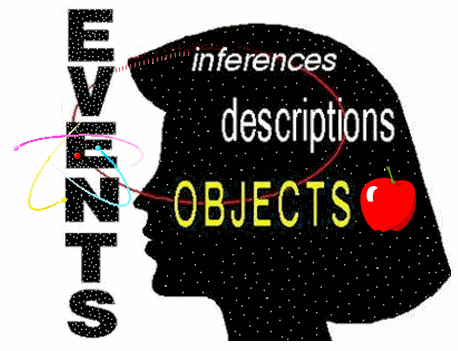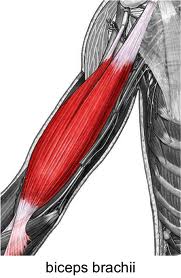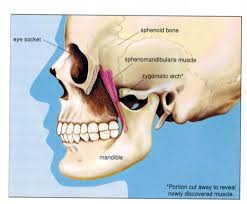
Creativity
Written February 1996 by Steven LewisWho would not like to be labelled "creative"? Most of us would. Creativity involves doing things different from others. However many instances of creativity end up producing nothing of significance, and some instances of creativity we could label downright sinister. Weren't the Nazi's "creative" in the tools they developed for efficient human destruction? Obviously, "creative" is another one of those terms that is overdefined by intension, underdefined by extension.
 My anatomy students are studying the skeletal muscles of the human body in preparation for their test next week. Their task is not an easy one, for there are over 600 skeletal muscles in the human body. Lucky for them I am offering a two-for-one sale. Thanks to bilateral symmetry, once you learn a muscle on one side of the body, you can apply what you learned to the other side. It's one of the few great deals left in America.
My anatomy students are studying the skeletal muscles of the human body in preparation for their test next week. Their task is not an easy one, for there are over 600 skeletal muscles in the human body. Lucky for them I am offering a two-for-one sale. Thanks to bilateral symmetry, once you learn a muscle on one side of the body, you can apply what you learned to the other side. It's one of the few great deals left in America.
More good news for my students. Each muscle usually is named for what it does or where it is located or its appearance. For example, the brachial biceps. This muscle is in the brachial region (your upper arm, where your "funny" bone is located). It has two origins off the scapula (shoulder blade), hence "biceps." Sounds easy enough ... I'm sure you are all ready to enroll. Here's the kicker.
In about one out of every 150 extremities the brachial biceps has more than 2 origins. In a few people their brachial biceps has 5 origins. Should we call their brachial biceps "brachial pentaceps" instead? I use examples like these to convince my students not to take their textbook generalizations too seriously. Textbook anatomy may present what is more common, but real life individuals show all sorts of variations. Anatomic variations can account for a Nolan Ryan, who could throw a baseball faster in his 40s than most pro pitchers in their prime.
You don't want to get medical help from a person who has a textbook mentality. They may do you a lot of harm. Textbook appendices (the "vermiform appendix") are always in the lower right quadrant of the abdominal-pelvic cavity. That may be true for most people, but a few people have their appendix elsewhere. You want a doctor who investigates before cutting, in case you are one of those "oddballs."
Now back to creativity. Textbooks usually present the muscular system as if all the skeletal muscles have been discovered. This viewpoint hardly seemed unreasonable until a team of researchers at the University of Maryland discovered in 1995 two previously unrecognized skeletal muscles that connect the orbit of the eye to the mandible (lower jaw bone). These were not tiny muscles either. Neither were they vestigial (useless), like the auricularis muscles (helps your dog turn its ears). These new muscles, labelled sphenomandibularis, actually help us masticate. That's chew to you.

Their discovery shocked the anatomy community. Who would have thought after hundreds of years of human dissection and learned discourses that another pair of muscles lurked inside our bodies! How could they have been missed all this time? One explanation has to do with the ways dissections are usually done. Dissections of the head usually are done using transverse incisions (cutting on a horizontal plane). The Maryland researchers decided to take a different approach. They dissected in a vertical plane, cutting off the tip of the nose and proceeding posterior. This new approach yielding the startling discovery that had for centuries been overlooked.
Trying a new approach sometimes can pay off big. That, of course, is what Korzybski did when he developed general semantics. In effect, he developed a system that can be used to teach others to be more constructively creative.
Go to General Semantics Home Page ||| Go to Steven Lewis Home Page